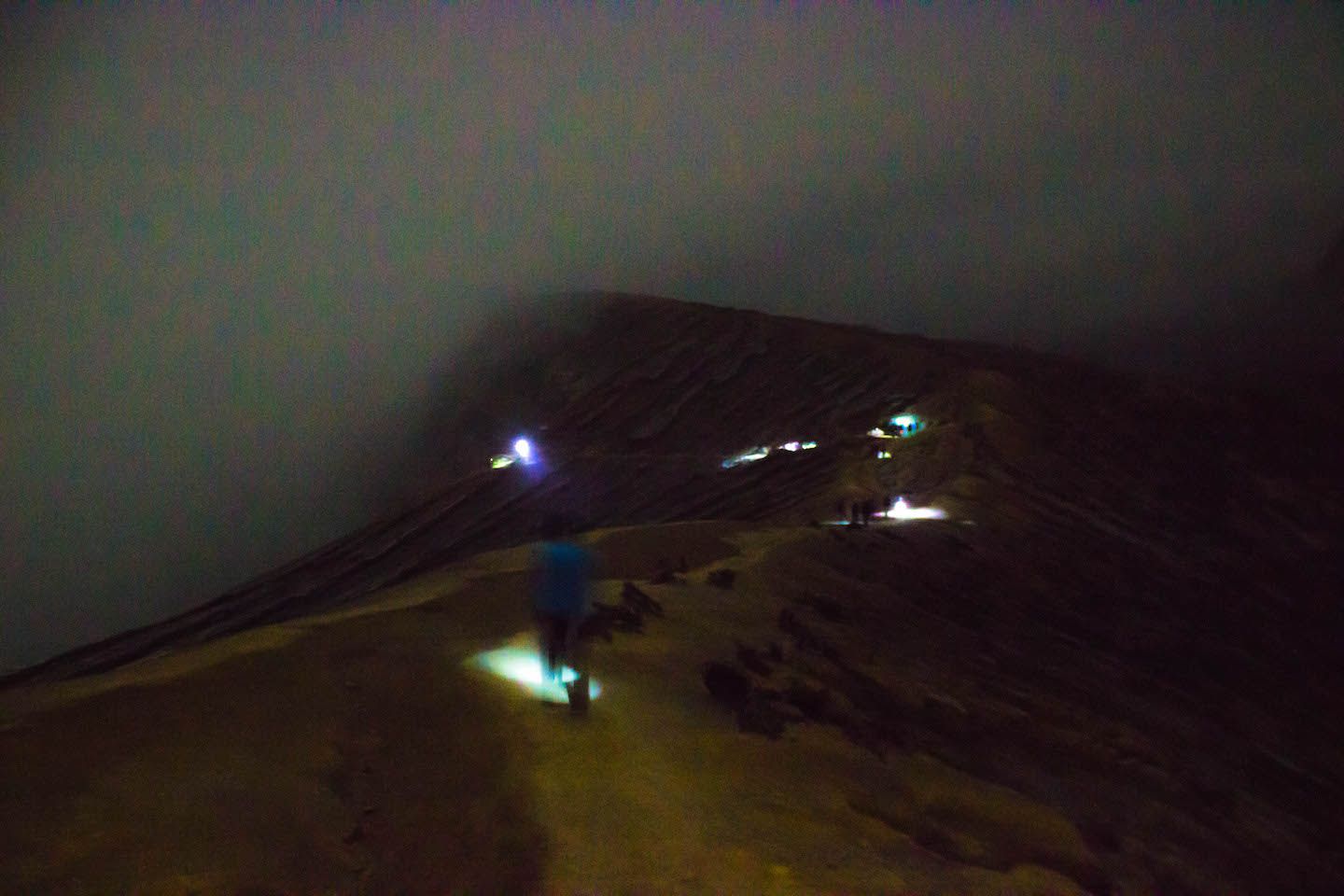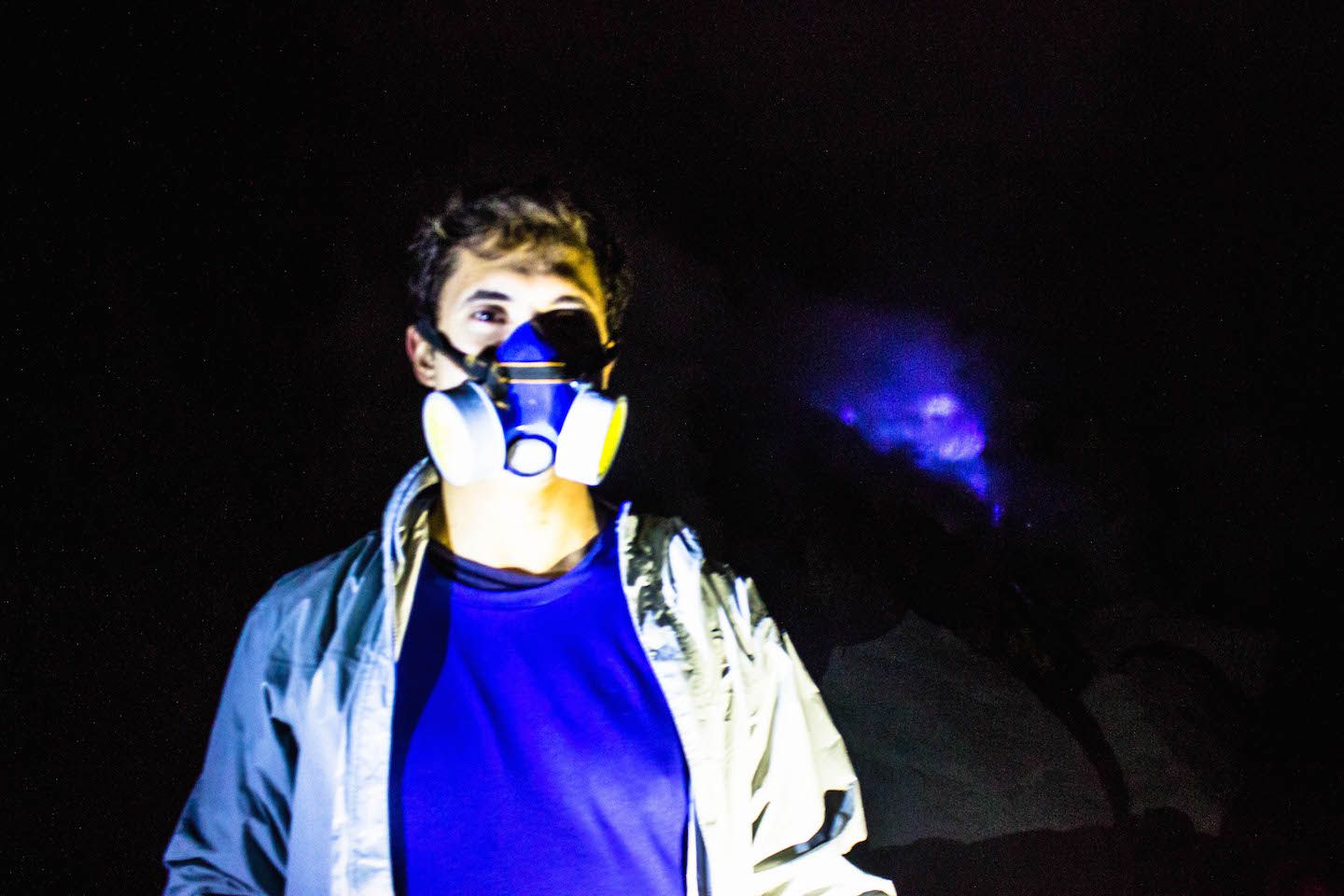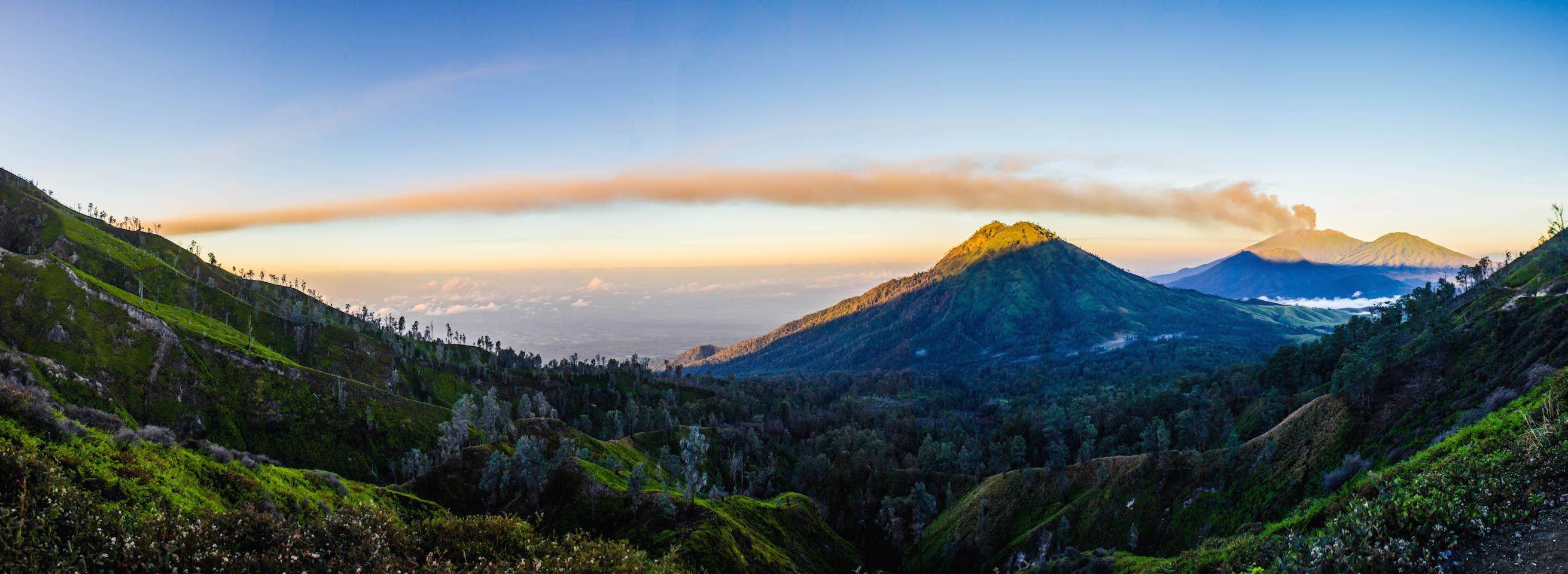After a wonderful sunrise at Mount Bromo, we continued our Bromo/Ijen tour in eastern Java. Having started the day before 3am, we were pretty tired by the time we got back to our hotel in Probolinggo, had breakfast, and departed for Mount Ijen. A National Geographic documentary made Mount Ijen famous to the world for its blue flames. Being one of only two places on earth to see this natural phenomenon (the other one is in Iceland), we didn’t want to miss it!
The rest of the day was spent similar to the day before – back in our van for another 8 hours or so of driving into the small village of Sempol, the base for Mount Ijen. The drive wasn’t as reckless as the first day and overall a better experience, though maybe we were just really exhausted and didn’t feel it as much. At around 8pm, we finally arrived. While this was earlier than the arrival time the night before, we still only had approximately 4 hours to sleep as the wakeup call to see the blue fire was at 12:30am (groan!).

We were back in the van at 1am, on route for another hour to the Ijen crater trailhead. Neither of us have ever attempted to trek or hike anything in the middle of the night, so we weren’t sure what to expect. It was completely dark outside and pretty chilly. Between driving and a great deal of waiting around for seemingly no one, we didn’t start walking until almost 3am. While the hike up to the crater was only 3km, the trail was steep and challenging. We stopped often to catch our breath.

The first hour or so of hiking was entirely in the dark, with only our weak flashlights and the stars in the sky lighting the way. If it weren’t for the large group of tourists hiking with us, it would have felt too scary and dangerous to be there on our own. As such, there were always people in front or behind us, everyone trekking at their own pace. With dawn approaching, we were able to see more and more of our surroundings as we hiked. Mount Raung in the distance spewed ash and smoke into the air – it was just a teaser for what was to come.
After nearly two hours of hiking, we reached Ijen’s crater rim, only to find out that to see the blue fire, we had to go down deep into the center of crater, walking for another hour. The descent into the crater was dangerous. It was pitch black, and the narrow, rocky, and slippery path was barely there. We tried not to think about how easy it would be to fall to our deaths. Good thing there were so many other people trekking into the crater, because we never would have even attempted to make our way down otherwise. The increasing sulfuric rotten egg smell accompanied us as we hiked deeper into the crater.

On the way down, we passed by many sulfur miners coming up or down the path. In poor conditions, wearing only flip-flops, the miners live off of the sulfur rocks they can gather at the bottom of the crater. Working in the toxic volcanic atmosphere, most of them don’t wear masks, which can cause serious respiratory problems long term. The miners get paid 7 cents of a dollar for each kilogram of sulfur they bring out of the crater and then down to the base of Ijen (at the bottom of the 3km steep hike where we started). They usually carry up to 90 kg of sulfur on their backs and the ones that are lucky and fit enough to do the journey twice a day, earn as much as USD 12 (!!!). 12 dollars for all that work! Talk about perspective. It’s heartbreaking to see so many of them living this kind of life that is utterly unthinkable to people like us. Yet again another reminder that we have so much to be grateful for.

The further we hiked into the crater, the further the bottom seemed to get. Despite the struggles, it wasn’t like we had much choice – either we keep going, or we turn back and walked all this way for nothing. Somewhere along the way, we miraculously ran into our guide. It got a lot easier after that to have someone point out the path of least resistance instead of trying to figure it out ourselves. We breathed sighs of relief when we finally made it down… and there were the blue flames!

All the smoke and steam rising from the sulfur mine obscured the view, but we could nonetheless catch glimpses of the blue flames. It was pretty cool. The blue fire phenomenon occurs when the sulfur flows in between the cracks in the ground and comes in contact with oxygen, burning at around 600 degrees Celsius. We mostly just stood there in awe.

I had expected to see blue flames roaring the way a regular fire does, but we mostly just saw flashes of bright blue light amidst all the white smoke. However, the flames were in fact burning high, with some going up to 5m in height. At some point I went closer to one and even at still a considerable distance (10-15m), I could feel the intense heat coming from the flames. It was powerful.

Besides the blue flames, Mount Ijen also has the largest acidic lake in the world. It was too dark to see it properly while we were inside the crater, so once we had enough of the blue fire, we headed back up to the rim of the crater. Despite feeling as if we’ve been awake for a long, long time, there was still a sunrise awaiting us.

The way up took much less time and effort than the way down. For one, it was much easier to be sure footed climbing up than to be sure footed heading into the abyss. For another, the first rays of sunlight lit the way, making the barely there path more obvious. Everything suddenly looked much more doable than it did earlier in the morning. We occasionally looked back to admire the view as we made our way up. It was beautiful in a way that we didn’t get to appreciate in the dark, even though the blue flames were now no longer visible. The sheer scale of the smoke rising out of the sulfur mine was astounding – it completely covered parts of the crater at times.

Back at the top, we had yet another lovely sunrise view for a second day in a row. On one side, the rugged surface of the Ijen crater and the lake; on the other, a lush green valley covered by clouds down below.

The scenery was unlike anything else we’ve ever seen. We were struck yet again by the wonder of nature, a place like this existing in our world. Even though we walked the same path where we had come in the dark, it looked and felt like a completely different area. All we could do was admire the views as much as we could.

Halfway down the path, we saw Mount Raung erupting again, this time bigger. Smoke and ash were spewed into the air, creating a huge trail that extended for as far as we could see.

Later that night we heard in the news that this happened:
Three days later, five airports in Indonesia (including the one in Bali) were closed due to the eruptions that we witnessed at Mount Raung. We know that must have caused a great deal of inconvenience for a lot of people, but our reaction was nevertheless: “whoaaa… cool!”
Just like at Mount Bromo, the blue flames and the views from the trek up to the crater of Ijen were well worth the effort. It was a grueling 3 days, but the few moments of amazement we will carry with us forever. Out of everything in Indonesia, we were happy we trekked not only one, but two, volcanoes. Someday we will look back on our trip and reflect on our most favourite times and the coolest things we’ve done. I’m pretty sure this will be one of them.
For more pictures from Mount Ijen, please visit the gallery!

